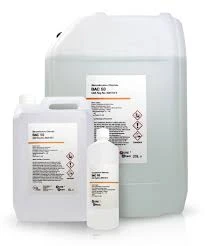cationic polyacrylamide
Understanding Cationic Polyacrylamide Applications and Benefits
Cationic polyacrylamide (CPAM) is a water-soluble polymer derived from acrylamide, recognized for its positive charge and high molecular weight. This unique structural property makes CPAM an essential component in various industrial applications, especially in water treatment, papermaking, and agriculture. Its ability to enhance flocculation, coagulation, and sedimentation processes underlines its significance in these sectors.
What is Cationic Polyacrylamide?
Cationic polyacrylamide is synthesized through the polymerization of acrylamide in the presence of cationic monomers. The resulting polymer consists of positively charged functional groups, allowing it to interact with negatively charged particles in water. This characteristic is pivotal in facilitating the removal of suspended solids and improving clarity in wastewater management. CPAM is available in various forms, including powders and emulsions, making it versatile for different applications.
Applications of Cationic Polyacrylamide
1. Water Treatment In water and wastewater treatment, CPAM serves as a flocculant that aids in the aggregation of fine particles suspended in liquids. By neutralizing the negative charges of these particles, CPAM promotes their adherence to one another, facilitating their eventual removal through sedimentation or filtration. This property is especially useful in municipal and industrial wastewater treatment facilities, where achieving high-quality effluent is crucial for environmental compliance.
2. Papermaking In the pulp and paper industry, CPAM is used as a retention and drainage aid. It enhances the retention of fillers and fibers during the paper manufacturing process, improving the strength and quality of the final product. By optimizing water removal, CPAM contributes to increased production efficiency and reduced operational costs.
cationic polyacrylamide

3. Soil Conditioners In agriculture, cationic polyacrylamide plays a vital role in soil erosion control and moisture retention. It forms a protective layer around soil particles, reducing the risk of erosion caused by water or wind. Additionally, CPAM improves soil structure, promoting better water infiltration and retention, which is essential for crop growth.
4. Mining Industry Cationic polyacrylamide is also utilized in the mining sector, where it assists in the agglomeration of fine materials. By improving the separation of minerals from waste, CPAM enhances recovery rates and contributes to more sustainable mining practices.
Advantages of Cationic Polyacrylamide
The utilization of cationic polyacrylamide offers several notable advantages. Its effectiveness at lower dosages compared to other flocculants leads to cost savings and reduced chemical usage. CPAM's high efficiency in reducing turbidity and enhancing solid-liquid separation contributes to better process performance across various applications.
Moreover, CPAM is non-toxic and environmentally friendly, making it suitable for industries that prioritize sustainability. Its ability to function in a broad pH range further expands its applicability, allowing for versatile use in various industrial processes.
Conclusion
Cationic polyacrylamide stands out as a versatile polymer with essential applications in water treatment, papermaking, agriculture, and mining. Its unique properties, including its cationic nature and high molecular weight, make it an indispensable tool for improving efficiency and effectiveness in these sectors. As industries increasingly emphasize sustainability and efficiency, CPAM will likely continue to play a critical role in driving innovative solutions for modern challenges. With its myriad benefits and applications, cationic polyacrylamide is set to remain a vital component in various industrial processes, ensuring cleaner water systems and enhanced agricultural productivity.
-
The Power of Isothiazolinones in Modern ApplicationsNewsMay.08,2025
-
Flocculants in Water TreatmentNewsMay.08,2025
-
Flocculants and Chemical Solutions: What You Need to KnowNewsMay.08,2025
-
Flocculants and Chemical Solutions: A Growing IndustryNewsMay.08,2025
-
Essential Chemicals: Polymaleic Anhydride and MoreNewsMay.08,2025
-
Acrylic Polymers: Essential Solutions for IndustryNewsMay.08,2025





